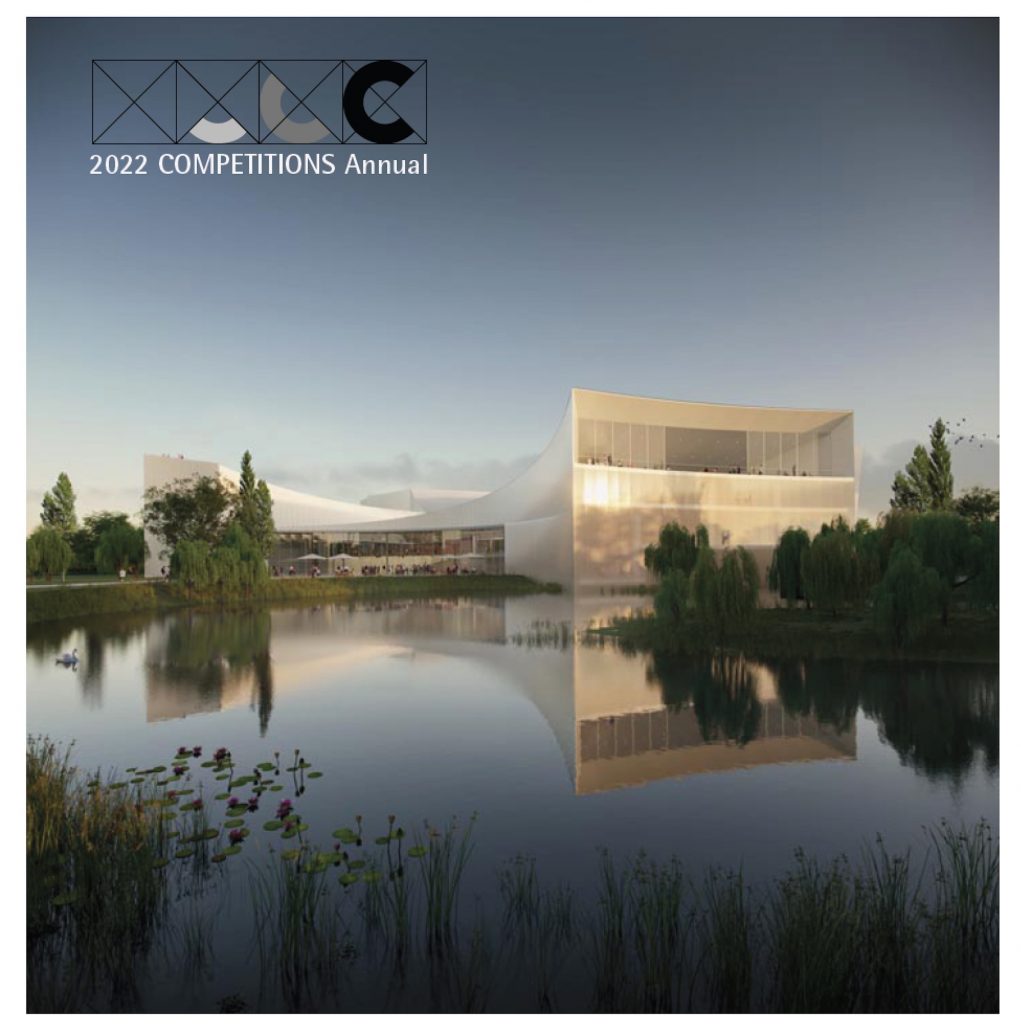The Connected City: Connecting Downtown Dallas to the Trinity RiverSponsor: Dallas CityDesign Studio, an office of the City of Dallas, in partnership with The Trinity Trust Foundation, Downtown Dallas, Inc. and The Real Estate Council Foundation
Type: Invited and “Open Stream” section (3 shortlisted firms already invited/open stream section for professionals and students with 4 finalists shortlisted)
Eligibility: Architects, landscape architects, urban planners
Fee: none
Language: English
Professional teams selected: OMA*AMO New York, Ricardo Bofill Taller de Arquitectura of Barcelona, and Stoss Landscape Urbanism of Boston with SHoP of New York. (Each team will receive $50,000 for their submission)
Awards:
Open stream finalists (4) will receive $5,000 each
Timetable: 24 July 2013 – Public Symposium with Professional Teams 19 Sept 2013 – Professional stream design proposals due 3 Oct 2013 – Open stream design proposals due 17 Oct 2013 – Opening of the Challenge Exhibition Jury:
- Larry Beasley, Chair (Retired Chief Planner, Vancouver, BC)
- Peter Bishop, Prof. of Urban Design, Bartlett School of Architecture, London
- John Crawford, CEO, Downtown Dallas, Inc.
- Allan Jacobs, Professor Emeritus, University of California, Berkeley and former San Francisco Director of Planning
- Mary McDermott Cook, Trinity Trust Foundation
- Linda McMahon, CEO, The Real Estate Council
- Robert Meckfessel, FAIA, Chair of the City of Dallas Urban Design Peer Review Panel
- Mohsen Mostafavi, Dean, Harvard University Graduate School of Design
Design Challenge
The Connected City Design Challenge is an open call for urban design strategies to connect Downtown Dallas and the Trinity River. The Trinity River Project is one of the most monumental public works and economic development projects ever attempted. The effort will realize one of the world’s largest urban parks with over 10,000 acres of land as public space. The Balanced Vision Plan was approved and endorsed by the Dallas City Council on December 8, 2003, as the master plan for the comprehensive development of the Trinity River Corridor. The plan includes the integration of flood control, transportation needs, recreational and aesthetic amenities, environmental preservation and functional design elements to ensure that the development represents the highest and best aspirations for the citizens of the community for generations to come.
Teams are urged to help reveal the untapped potential of this area through innovative and compelling design proposals. It is our belief that the complexity of factors converging in this part of our city are catalysts for compelling, innovative, and precedent setting design proposals. The Connected City Design Challenge will inspire new strategies for overcoming the voids often created by urban infrastructure. It is time for a clear vision and urban strategy to be developed to inspire a new future for this area of our city.
For more information and to enter, go to:
http://connectedcitydesign.com/about.aspx |
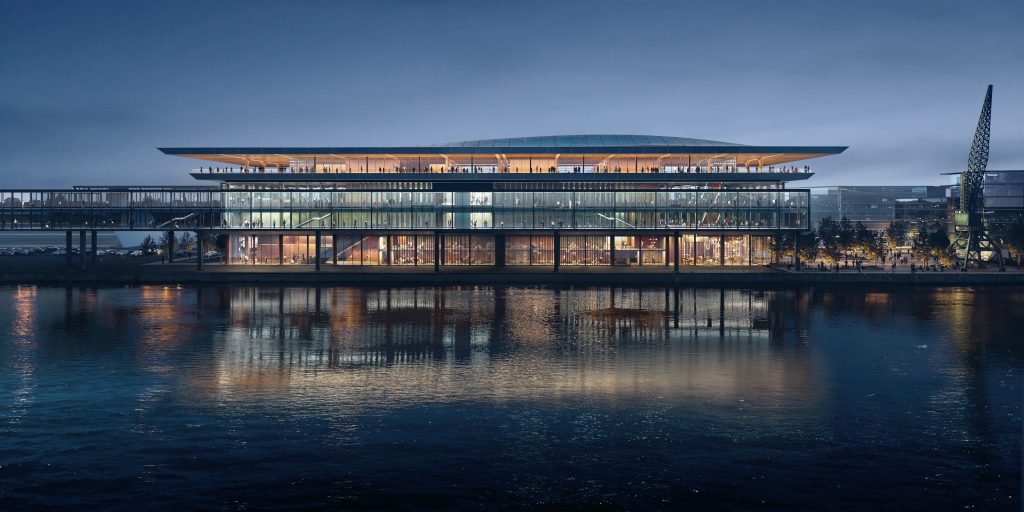
1st Place: Zaha Hadid Architects – night view from river – Render by Negativ
Arriving to board a ferry boat or cruise ship used to be a rather mundane experience. If you had luggage, you might be able to drop it off upon boarding, assuming that the boarding operation was sophisticated enough. In any case, the arrival experience was nothing to look forward to. I recall boarding the SS United States for a trip to Europe in the late 1950s. Arriving at the pier in New York, the only thought any traveler had was to board that ocean liner as soon as possible, find one’s cabin, and start exploring. If you were in New York City and arriving early, a nearby restaurant or cafe would be your best bet while passing time before boarding. Read more… Young Architects in Competitions When Competitions and a New Generation of Ideas Elevate Architectural Quality 
by Jean-Pierre Chupin and G. Stanley Collyer
published by Potential Architecture Books, Montreal, Canada 2020
271 illustrations in color and black & white
Available in PDF and eBook formats
ISBN 9781988962047
Wwhat do the Vietnam Memorial, the St. Louis Arch, and the Sydney Opera House have in common? These world renowned landmarks were all designed by architects under the age of 40, and in each case they were selected through open competitions. At their best, design competitions can provide a singular opportunity for young and unknown architects to make their mark on the built environment and launch productive, fruitful careers. But what happens when design competitions are engineered to favor the established and experienced practitioners from the very outset? This comprehensive new book written by Jean-Pierre Chupin (Canadian Competitions Catalogue) and Stanley Collyer (COMPETITIONS) highlights for the crucial role competitions have played in fostering the careers of young architects, and makes an argument against the trend of invited competitions and RFQs. The authors take an in-depth look at past competitions won by young architects and planners, and survey the state of competitions through the world on a region by region basis. The end result is a compelling argument for an inclusive approach to conducting international design competitions. Download Young Architects in Competitions for free at the following link: https://crc.umontreal.ca/en/publications-libre-acces/ 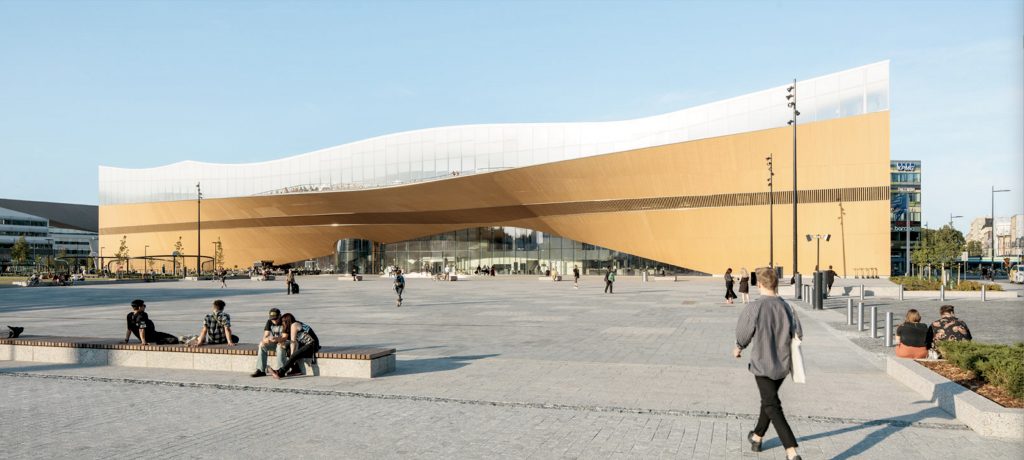
Helsinki Central Library, by ALA Architects (2012-2018)
The world has experienced a limited number of open competitions over the past three decades, but even with diminishing numbers, some stand out among projects in their categories that can’t be ignored for the high quality and degree of creativity they revealed. Included among those are several invited competitions that were extraordinary in their efforts to explore new avenues of institutional and museum design. Some might ask why the Vietnam Memorial is not mentioned here. Only included in our list are competitions that were covered by us, beginning in 1990 with COMPETITIONS magazine to the present day. As for what category a project under construction (Science Island), might belong to or fundraising still in progress (San Jose’s Urban Confluence or the Cold War Memorial competition, Wisconsin), we would classify the former as “built” and wait and see what happens with the latter—keeping our fingers crossed for a positive outcome. Read More… 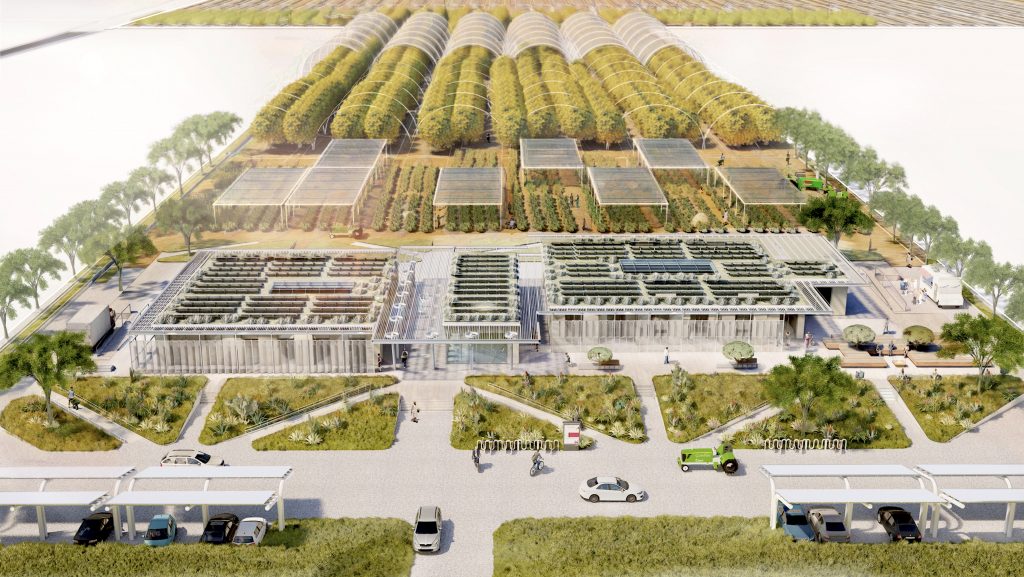
2023 Teaching and Innovation Farm Lab Graduate Student Honor Award by USC (aerial view)
Architecture at Zero competitions, which focus on the theme, Design Competition for Decarbonization, Equity and Resilience in California, have been supported by numerous California utilities such as Southern California Edison, PG&E, SoCAl Gas, etc., who have recognized the need for better climate solutions in that state as well as globally. Until recently, most of these competitions were based on an ideas only format, with few expectations that any of the winning designs would actually be realized. The anticipated realization of the 2022 and 2023 competitions suggests that some clients are taking these ideas seriously enough to go ahead with realization. Read more… 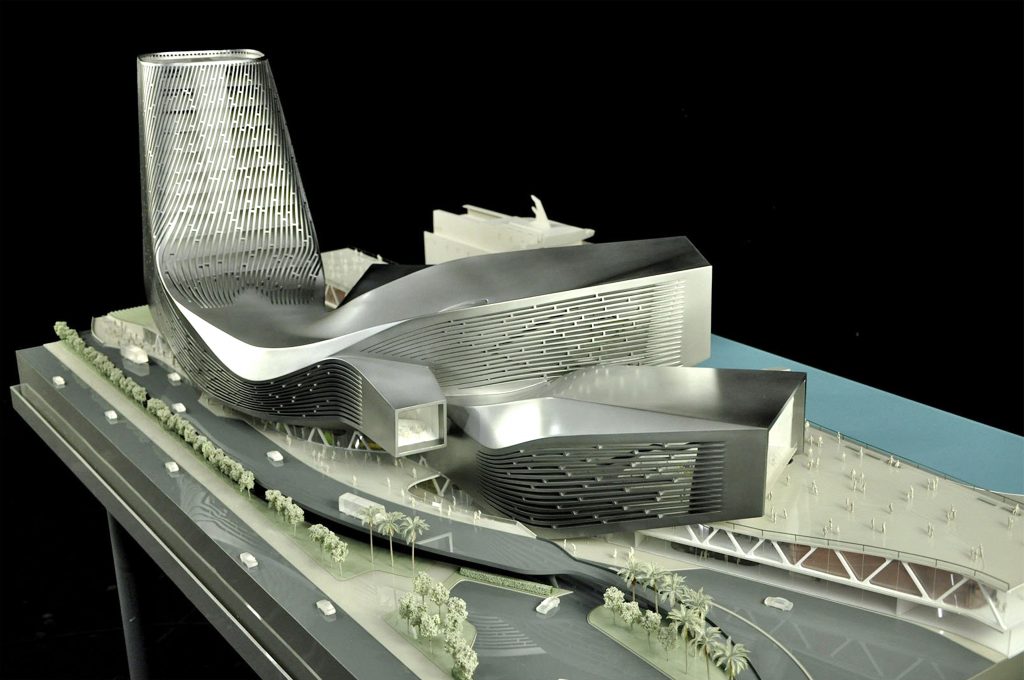
RUR model perspective – ©RUR
New Kaohsiung Port and Cruise Terminal, Taiwan (2011-2020)
Reiser+Umemoto RUR Architecture PC/ Jesse Reiser – U.S.A.
with
Fei & Cheng Associates/Philip T.C. Fei – R.O.C. (Tendener)
This was probably the last international open competition result that was built in Taiwan. A later competition for the Keelung Harbor Service Building Competition, won by Neil Denari of the U.S., the result of a shortlisting procedure, was not built. The fact that the project by RUR was eventually completed—the result of the RUR/Fei & Cheng’s winning entry there—certainly goes back to the collaborative role of those to firms in winning the 2008 Taipei Pop Music Center competition, a collaboration that should not be underestimated in setting the stage for this competition Read more… 
Winning entry ©Herzog de Meuron
In visiting any museum, one might wonder what important works of art are out of view in storage, possibly not considered high profile enough to see the light of day? In Korea, an answer to this question is in the making. It can come as no surprise that museums are running out of storage space. This is not just the case with long established “western” museums, but elsewhere throughout the world as well. In Seoul, South Korea, such an issue has been addressed by planning for a new kind of storage facility, the Seouipul Open Storage Museum. The new institution will house artworks and artifacts of three major museums in Seoul: the Seoul Museum of Modern Art, the Seoul Museum of History, and the Seoul Museum of Craft Art.
Read more… |



























